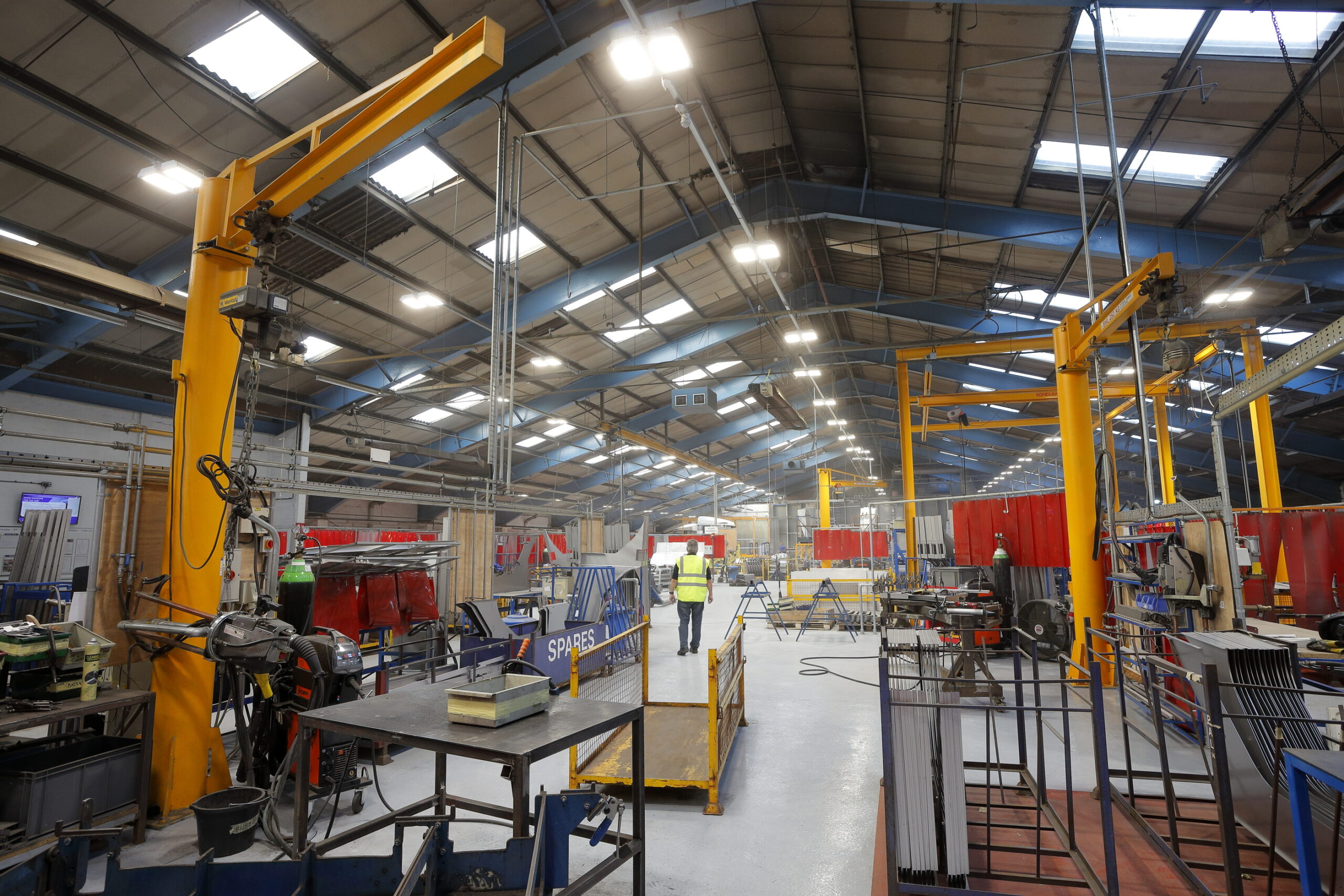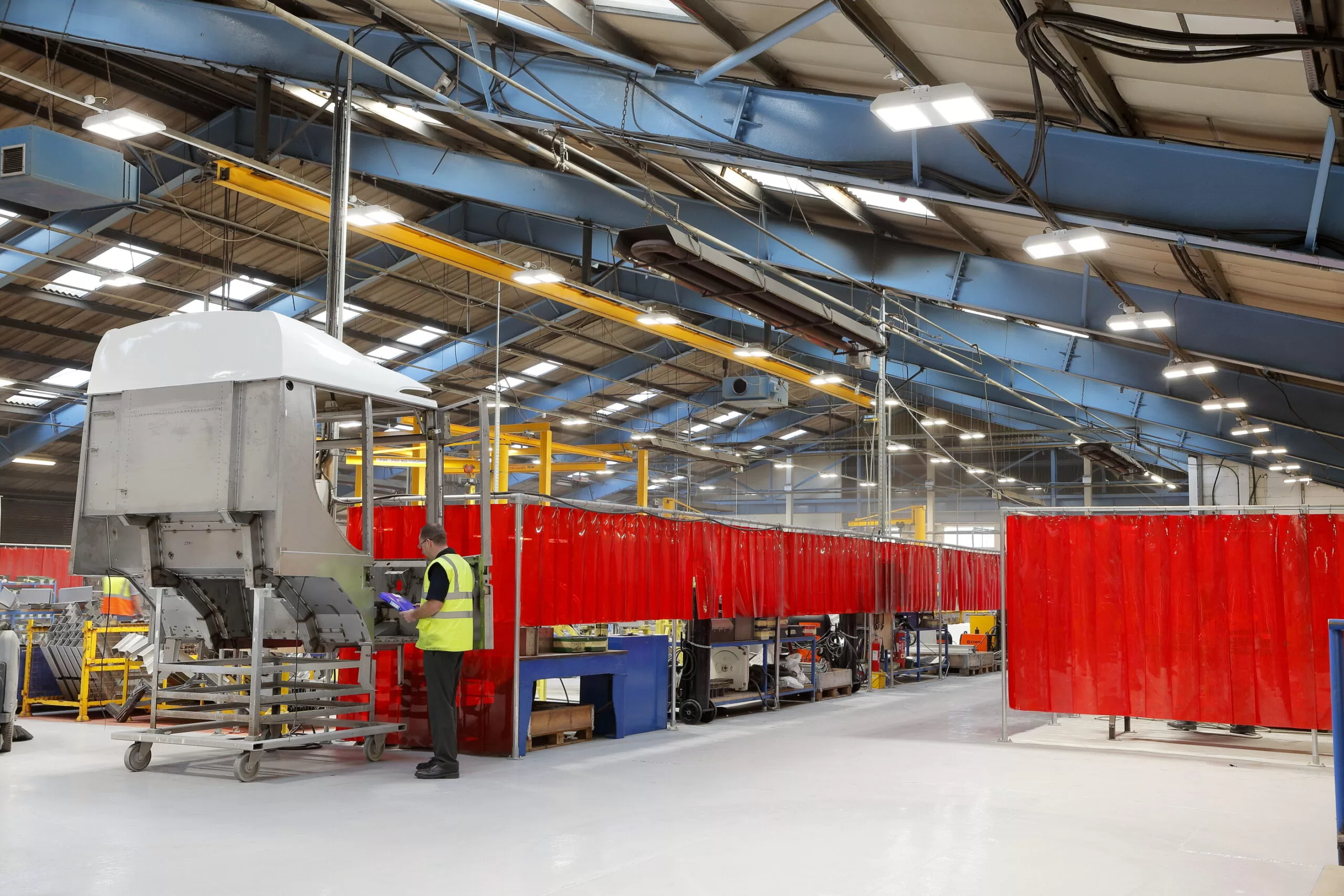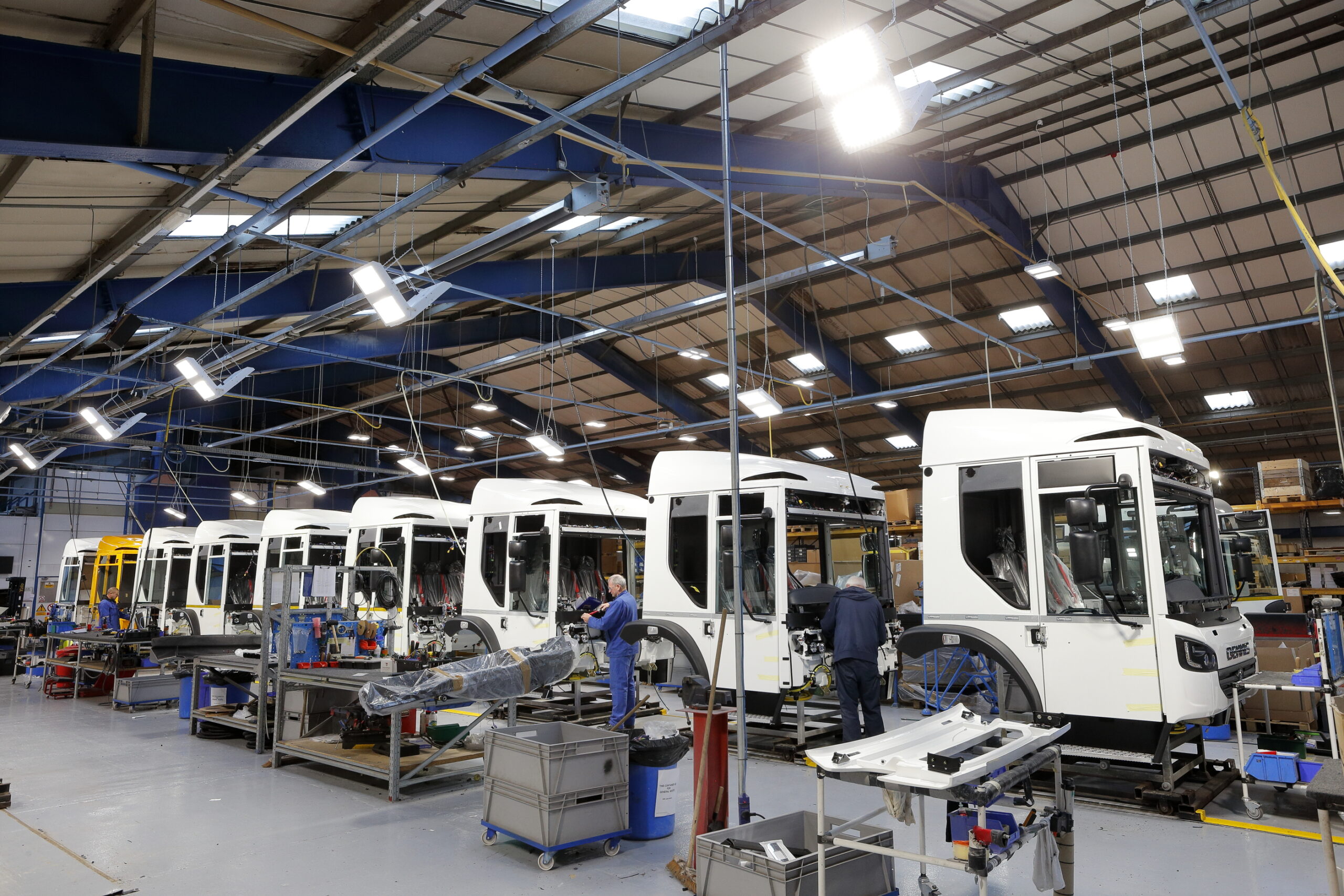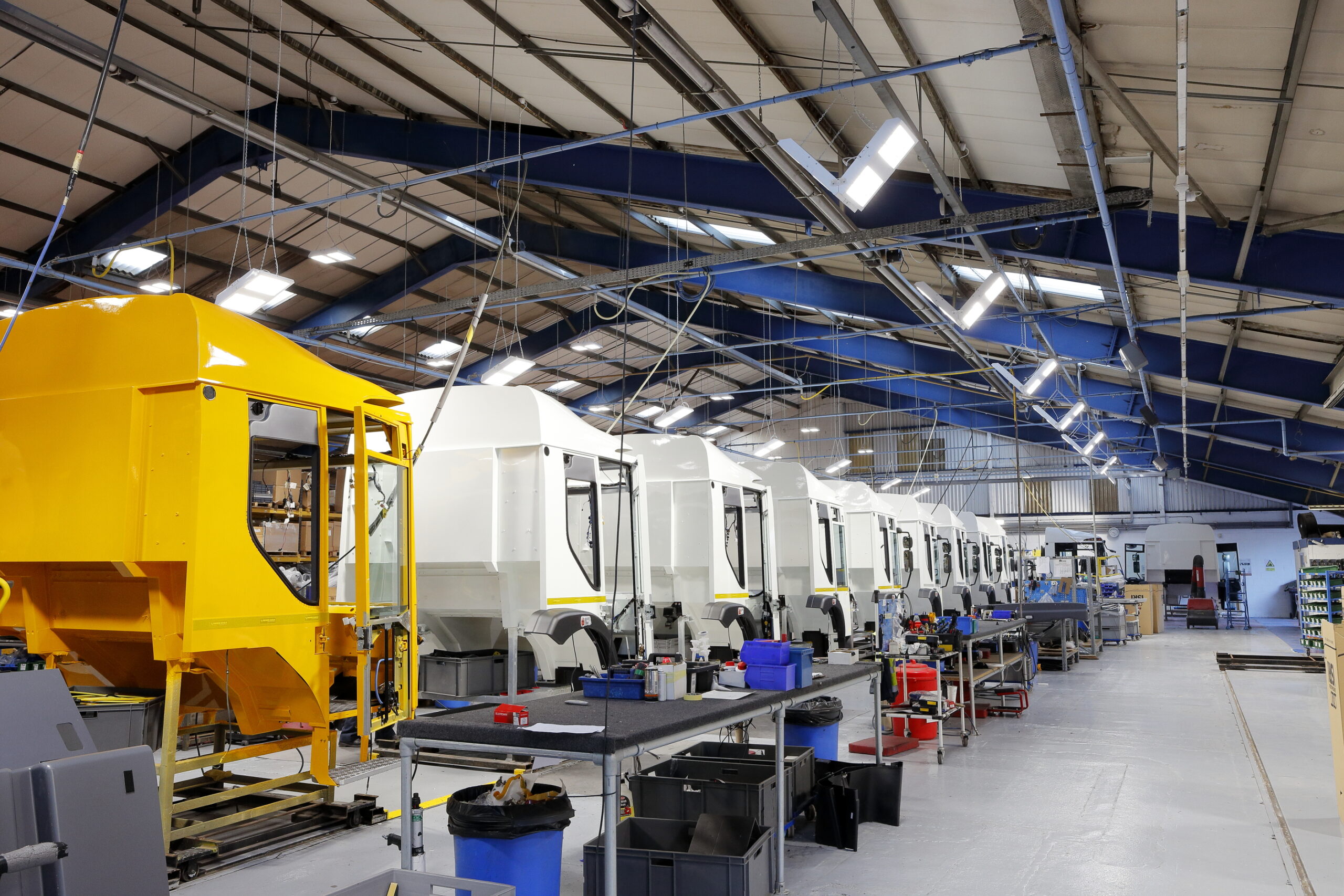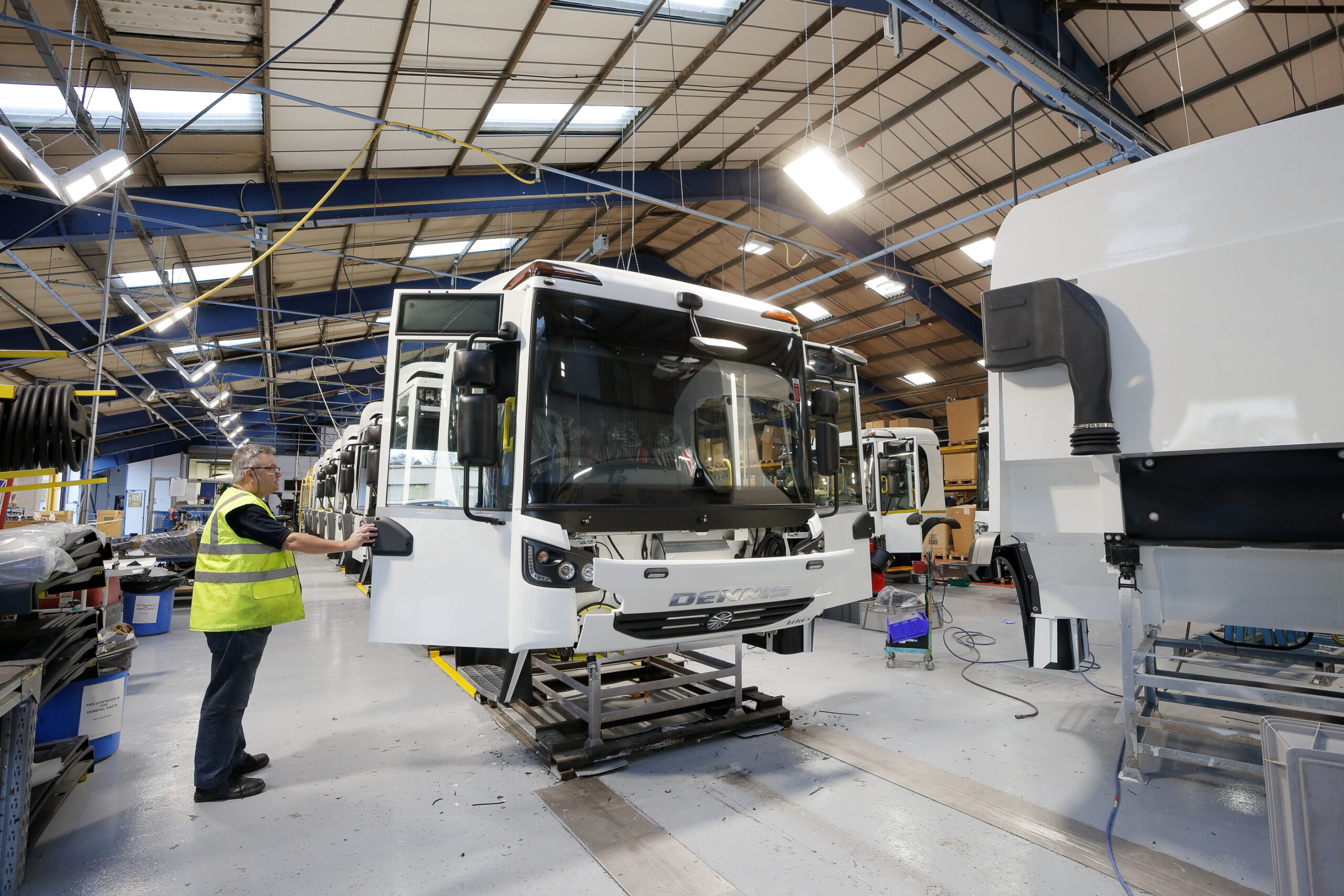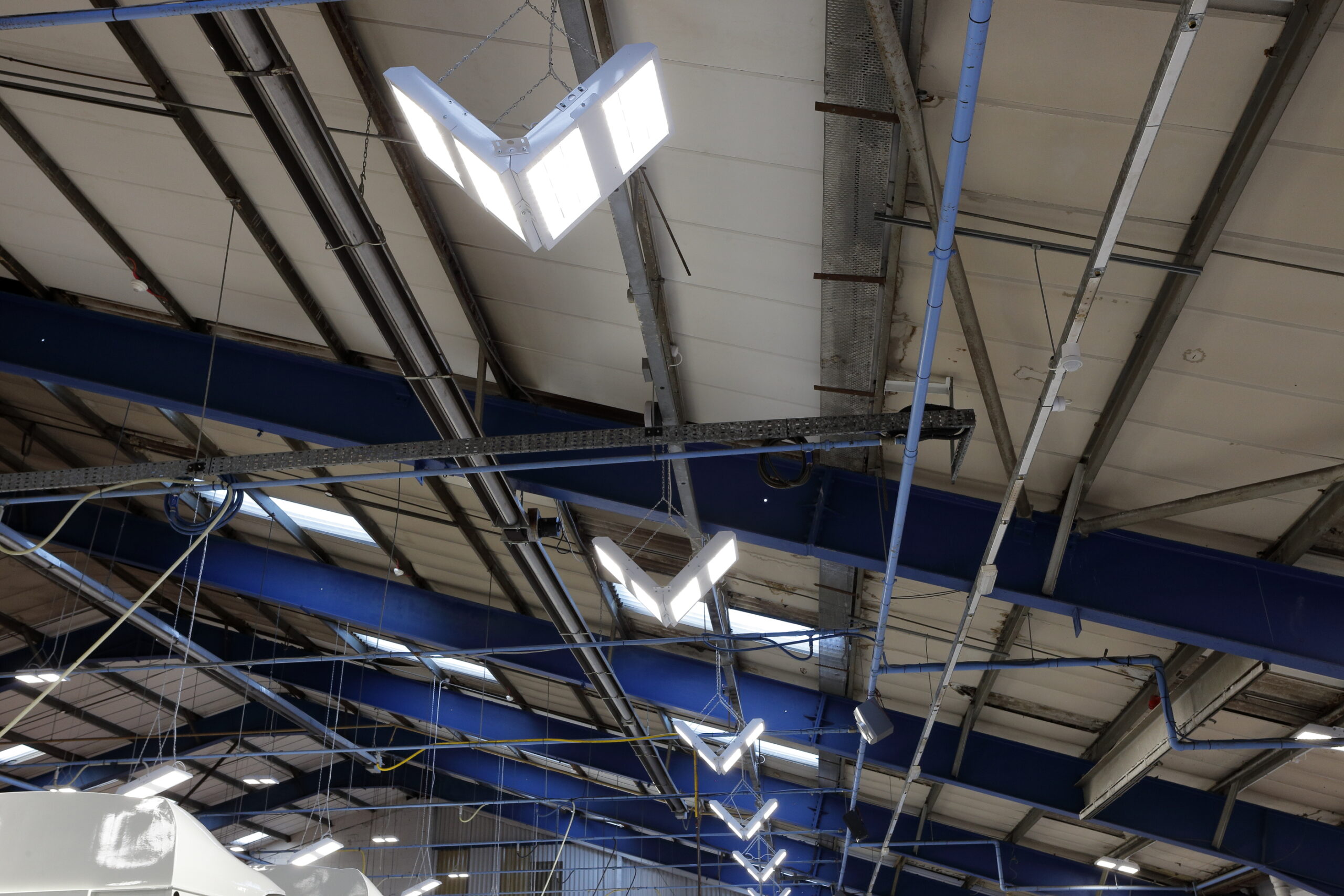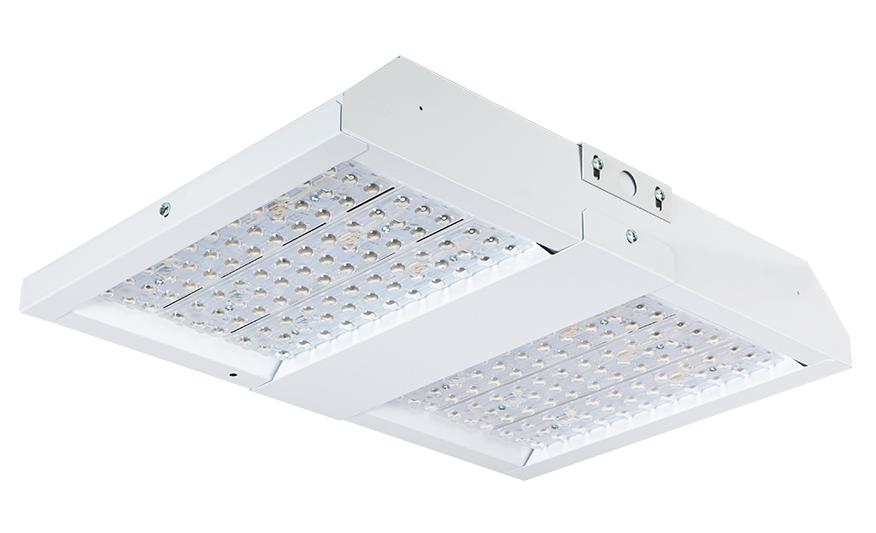
Dennis Eagle, Blackpool
Tamlite Lighting Upgrade Enhances Illumination Control at Dennis Eagle Factory
Dennis Eagle is a leading commercial vehicle manufacture. Their recent comprehensive lighting upgrade at its Blackpool facility was the result of a congruence of several key circumstances. In addition to replacing the factory building’s roof, the operators also needed to respond to a company directive to reduce energy costs. Inevitably, they quickly realised that switching to next-generation lighting was going to be crucial. Dennis Eagle’s Neil Walton said :"The primary objectives for the upgrade were to replace the old-fashioned lighting with more efficient equivalents. This is to achieve better control of the lighting; and simplify maintenance and reduce associated costs in the long-term.”
As a busy factory with a steady throughput of different types of vehicle, the upgrade needed to be as unobtrusive as possible to day-to-day operations. Consequently, the work was carried out in phases and primarily on days on which the factory was in shutdown mode.
On-site work
Neil Walton and his team took time to research next-generation lighting and consider what solution would be most appropriate for the project. After linking up with Phil Thomas, Sales Engineer at electrical wholesaler and contractor CEF, he was convinced that Tamlite Lighting had the products and the expertise to deliver on time and in budget. A deal was struck to provide a scheme featuring a number of the company’s latest and most efficient LED lighting solutions.
Following advice from Tamlite, Mr. Walton also decided to install motion sensors to ensure that lighting was only used when and where it was required.
“We had experimented with motion sensors in some of our offices and had found that they worked out very well for us,” he said. “So, with this upgrade we implemented them across the site in tandem with the new lighting systems. We expect it to deliver significant energy cost reductions for us over the long-term.”
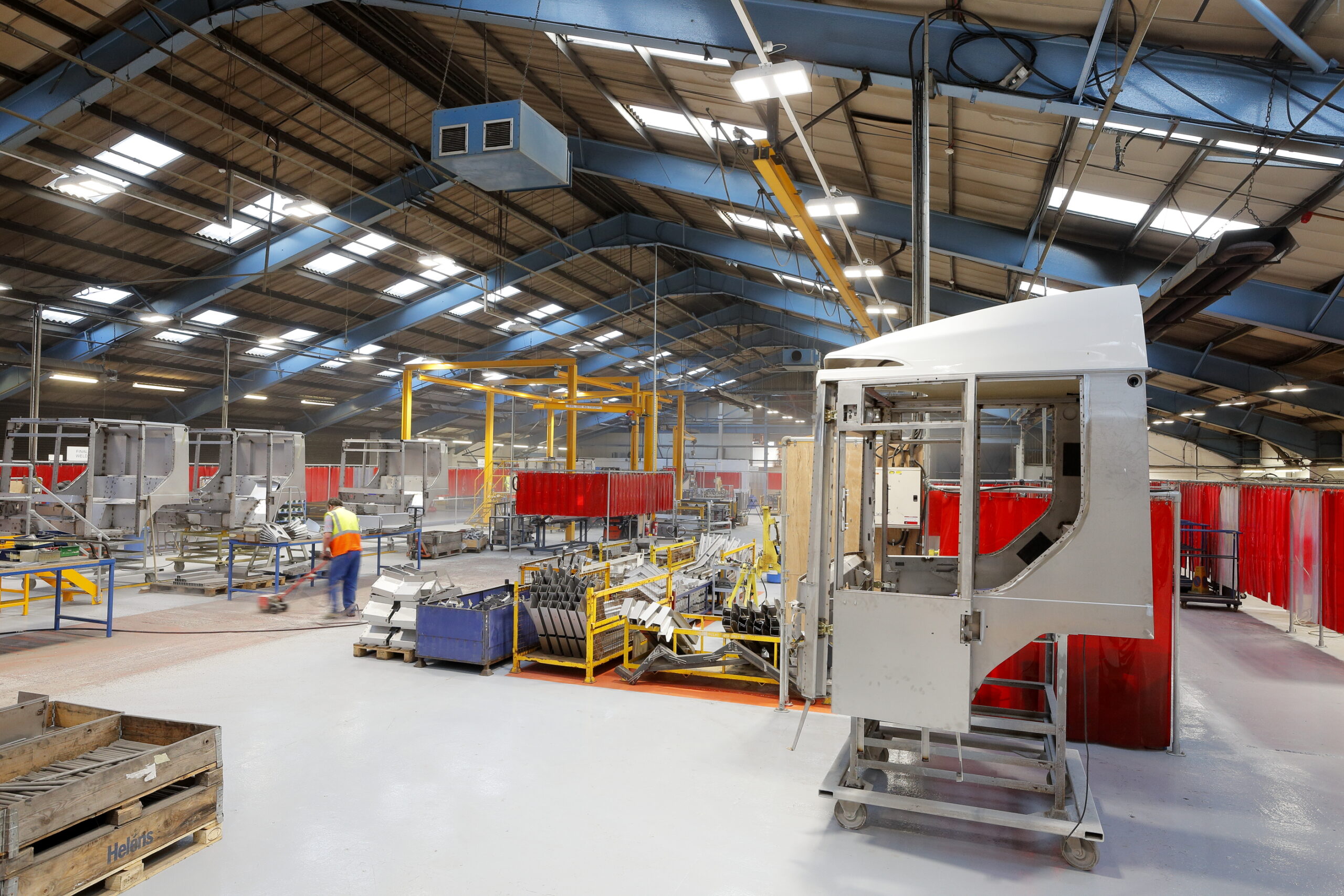
As intended, the work schedule was devised in order to complement the needs of the factory floor. “We had to work around production times,” said Walton. “The factory is closed on Fridays, so we carried out a lot of work then as well as on Saturdays. It is worth pointing that our on-site electrician proved to be really invaluable, too. The first phase of the project centred upon the fabrication shop. Then, during an annual shutdown period at the end of July and beginning of August, we moved onto the finishing line where the vehicle cabs, interiors and electrics are completed.”
Long-term benefits
The work was completed to time and budget, and by general agreement has delivered a significant improvement to the overall quality of illumination.
It will take a while for the long-term energy savings to be become certain, although consumption by LED lighting when compared to traditional equivalents is frequently reduced by as much as 60%. Nonetheless, it has already been shown to be playing its role in the broader objective of saving energy across the site. Overall consumption dropped by several hundred kilowatt hours between 2016 and 2017.
With more energy-saving measures planned, consumption is set to be reduced even further in 2018. And contributing to this positive outlook will be a further wave of lighting upgrades that will again be undertaken in conjunction with the Tamlite Lighting team.
“We have been really delighted by the results of this upgrade,” said Walton. “So we are happy to move onto other areas of the Blackpool site. We are now about to upgrade various offices, boardrooms and ancillary spaces with new lighting, and this work is scheduled to be completed in a three-period over the festive season.”
